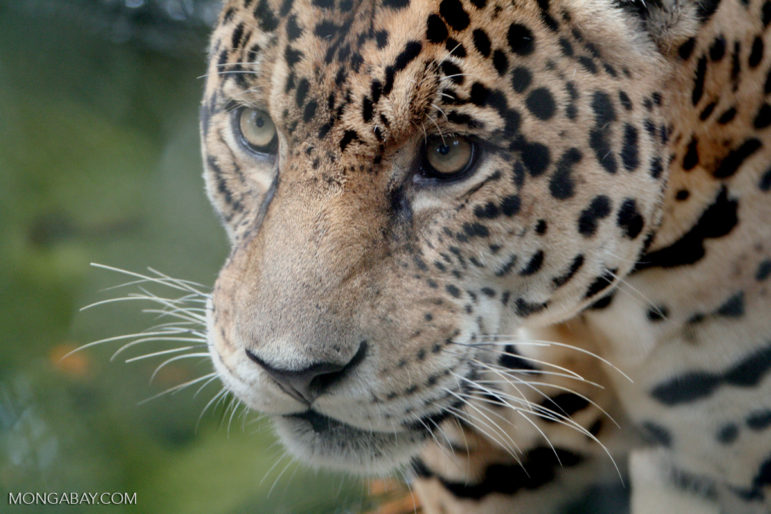Earlier this month Mongabay held a Bay Area Tropical Forest Network (BATFN) event at the Carnegie Institution’s Department of Global Ecology at Stanford University. The event featured Anthony Giordano of S.P.E.C.I.E.S and the Chaco Jaguar Conservation Project, who spoke about his efforts to conserve jaguars and their habitat in the Chaco ecosystem of Paraguay, Bolivia, and Argentina.
Giordano told the audience about the natural history of the jaguar, which is the third largest cat species in the world (and the most powerful of the big cats pound for pound) and once ranged from California to Patagonia. He explained that jaguars today face three major threats: loss of habitat, conflict with ranchers and farmers, and declining availability of prey. As a consequence, jaguars have gone functionally extinct in the United States, El Salvador, Chile, Argentina, and Uruguay, while suffering heavy losses across many other range countries. Jaguars now occupy less than half their early 1990s range.

Giordano also spoke about the Chaco, which is the second largest biome after the Amazon in South America, with an original expanse topping a million square miles. While the Chaco is often characterized as a dry forest ecosystem, it is actually one of the world’s most diversified biomes, with habitats ranging from flooded swamps to savannas to humid forests. This variance supports a richness of species, including all three species of peccary. But like the jaguar, the Chaco is also under threat, primarily from cattle ranching and soy farms. Losses have been substantial in Argentina and Paraguay, which have some of the highest deforestation rates in the world since 2000.
Given these dire trends, Giordano has launched a series of initiatives to study and protect the Chaco in Paraguay, including the first scientific survey of jaguar across the country, supporting the development of a national jaguar conservation plan, and leading workshops to to address human-jaguar conflict. Giordano says that jaguar conservation can support broader efforts to conserve the Chaco ecosystem by building good relationships with landowners and creating positive incentives for maintaining wildlife populations and encouraging habitat restoration.
Mongabay’s next BATFN takes place in Palo Alto in May. More details to come.